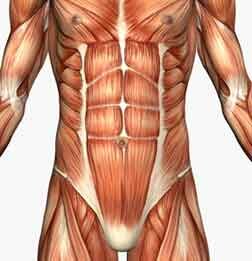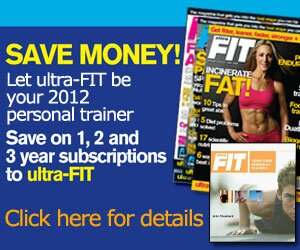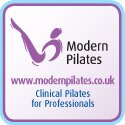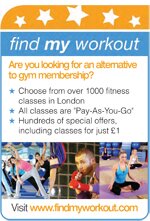 The core is the collective term used to describe the muscles of your abdomen, waist and lower back. Essentially comprising your entire midsection, these muscles work to control the movements of your spine as well as supporting the efforts of your arms and legs. Your core is actually made up of three distinct layers that all work independently and also synergistically depending on the task you are performing…
The core is the collective term used to describe the muscles of your abdomen, waist and lower back. Essentially comprising your entire midsection, these muscles work to control the movements of your spine as well as supporting the efforts of your arms and legs. Your core is actually made up of three distinct layers that all work independently and also synergistically depending on the task you are performing…
The Deep Layer
Your spine consists of 33 individual bones called vertebrae, most of which are separated by intervertebral discs. Although the lowest sections of your spine are fused and immobile—the sacrum and coccyx, the rest of the vertebrae are moderately moveable. These movements are controlled by position sense muscles which are named after their location and/or function. The position sense muscles run from vertebrae to vertebrae and control the lateral, transverse and rotational movements of each individual vertebra.
These muscles are especially active when you perform exercises on unstable surfaces such as stability balls and BOSUs.
The Mid Layer
Commonly referred to as the inner unit, this group of muscles is responsible for compressing your abdominal contents and creating something called Intra Abdominal Pressure or IAP for short. Increasing IAP helps to support your spine from within and occurs when you “brace” your abs. Bracing has been shown to reduce the pressure on your intervertebral discs when performing strenuous exercise and subsequently reduce your risk of spinal injury.
How to Brace
Bracing should happen automatically to coincide with physical exertion but, as we spend so much time sat down and being passively supported by chair backs and car seats, most of us need to re-learn this essential back-protection maneuver. Don’t worry though – with practice and awareness you’ll soon be bracing without thinking about it. As a bonus, regular bracing can increase the resting tone of your abdominal muscles and help firm-up your mid section.
- “Pull up” your pelvic floor muscles as though you are trying to stop the flow of urine
- Tense up for a “gut punch” but don’t pull your belly in
- Inhale
You should feel your midsection become rigid and strong. The trick is to time inhalation with the point at which an exercise is most difficult. For example, when squatting inhale as your descend and then exhale as you return to the standing position. Make sure you try to avoid holding your breath as this can cause your blood pressure to rise dramatically. Practice bracing not just when you workout but anytime you want to have a mini-core workout. Practice makes perfect after all!
Belt up?!
Despite what many people think, wearing a weight lifting belt does not support your spine in the traditional sense but in fact helps create intra abdominal pressure by providing resistance when the abs are pushed out. This is fine when you have your belt on but if you push your abs out when a belt is not being worn e.g. when lifting a heavy grocery bag out of the boot of your car, there is a significant drop in intra abdominal pressure and an subsequent increased risk of injury. It’s also worth noting that wearing a belt concentrates a shearing force onto the top and bottom edges of the belt and actually increases loading on your spine rather than reduces it. It’s much better to learn to use your natural weight training belt, your transverse abdominus muscles, than become over reliant on a lifting belt that teaches you to rely on a faulty recruitment pattern to create IAP.
 The Outer Layer
The Outer Layer
The muscles of the outer layer are responsible for the gross movements of your spine. These are the muscles most people tend to concentrate on when they do their core work.
The Muscles of the outer unit and their functions:
- Rectus Abdominus – responsible for flexion and lateral flexion of the spine
- Internal and External Obliques – responsible for rotation and lateral flexion of the spine
- Erector Spinae – responsible for extension and lateral flexion of the spine
- Quadratus Lumborum – responsible for lateral flexion and extension of the spine
The multitude of muscles and actions of the outer unit means that it will take more than a couple of sets of crunches at the end of a workout to effectively exercise this muscle group. A well balanced core workout should include the following classifications of exercise:
Flexion – example: crunches
Extension – example: prone dorsal raises
Rotation – example: cable Russian twists
Bracing – example: planks
Lateral Flexion – example: dumbbell side bands
There’s no need to perform all classes of exercise in the same workout but by making sure you train each movement equally throughout your training week you can be sure that you are developing all of your core muscles equally. An imbalance from front to back or from left to right can result in postural abnormalities and increase your risk of back injury.
Core Misconceptions
Just like any other muscle group, your core needs to be challenged with progressively heavier weights and more challenging exercises to develop and improve. This means that you should choose exercises that allow you to apply a significant load to your core. If you can’t increase the load on your core muscles you’ll have to increase the number of repetitions you perform but there is a definite cut off point at which you will end up doing too many repetitions. As a general rule, try to keep your rep count below 20. Not only will this save you time and make your workouts more efficient, you’ll develop strength and not just endurance in these important muscles.
Popularity: 1% [?]










